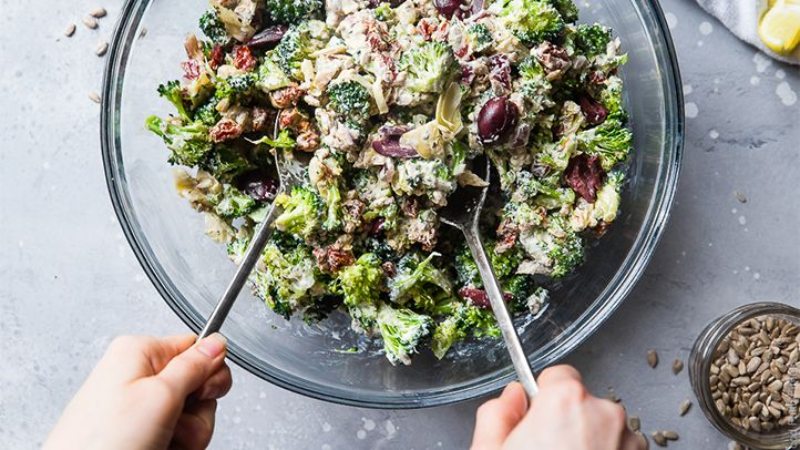For people with diabetes, managing blood sugar levels becomes a crucial part of daily life. Spikes in blood sugar can leave you feeling sluggish, irritable, and can even lead to long-term health complications. This article empowers you to take control of your health through the power of your plate. We’ll delve into the world of low-glycemic foods, explore delicious recipe ideas, and equip you with the knowledge to create balanced meals that promote stable blood sugar and a vibrant life.
Understanding the Glycemic Index (GI): Your Food Ally
Before diving into delicious recipes, let’s understand the Glycemic Index (GI). The GI ranks foods based on their impact on blood sugar levels. Low-GI foods are digested and absorbed slowly, leading to a gradual rise in blood sugar, while high-GI foods cause a rapid spike. By prioritizing low-GI options, you can achieve better blood sugar control and feel energized throughout the day.
Building Your Low-GI Plate: Essential Food Groups
1. Non-Starchy Vegetables: These powerhouses are low in GI and carbohydrates, packed with vitamins, minerals, and fiber. Fill half your plate with a colorful variety like broccoli, spinach, bell peppers, mushrooms, leafy greens, and asparagus.
2. Low-GI Fruits: While some fruits have a higher GI, options like berries, grapefruits, apples, pears, and plums are excellent choices. Enjoy them in moderation as part of a balanced meal or snack.
3. Whole Grains: Replace refined grains with whole-grain options like brown rice, quinoa, whole-wheat bread, oats, barley, and buckwheat. These are rich in fiber, keeping you feeling fuller for longer and promoting stable blood sugar levels.
4. Lean Protein: Protein helps regulate blood sugar and promotes satiety. Incorporate lean protein sources like chicken, fish, beans, lentils, tofu, or low-fat dairy products into your meals.
5. Healthy Fats: Don’t shy away from healthy fats! Avocados, nuts, seeds, and olive oil provide essential nutrients, promote satiety, and can even slow down carbohydrate absorption.
Sample Low-GI Meal Plans:
- Breakfast: Scrambled eggs with spinach and whole-wheat toast, berries with a sprinkle of almonds.
- Lunch: Grilled chicken salad with mixed greens, quinoa, and a light vinaigrette dressing.
- Dinner: Salmon with roasted vegetables and brown rice.
- Snack: Greek yogurt with berries and chia seeds, a handful of almonds with carrot sticks.
Beyond the Basics: Unlocking Flavorful Low-GI Options
- Spice Up Your Life: Experiment with herbs and spices like cinnamon, turmeric, ginger, and cayenne pepper to add flavor and potential health benefits without impacting GI.
- Healthy Swaps: Craving a sweet treat? Try a low-GI alternative like baked apples with cinnamon or a dark chocolate square.
- Embrace Ethnic Flavors: Explore cuisines known for their low-GI emphasis. Think Mediterranean, Indian, or Japanese dishes often featuring whole grains, vegetables, and lean protein.
Delicious Low-GI Recipes:
- Spiced Chickpea Buddha Bowl: A protein and fiber powerhouse with roasted chickpeas, brown rice, roasted vegetables, and a tahini dressing.
- Lentil Soup with Whole-Wheat Bread: A hearty and satisfying soup packed with protein, fiber, and vegetables.
- Black Bean Burgers with Sweet Potato Fries: A healthier burger alternative with black beans, quinoa, and a side of baked sweet potato fries.
- Cauliflower Rice Bowls with Grilled Chicken: A flavorful and versatile base made with riced cauliflower, topped with grilled chicken, vegetables, and a homemade low-sugar sauce.
Remember, these are just starting points! Explore online resources and cookbooks dedicated to low-GI recipes. Experiment in the kitchen and discover delicious meals that fit your preferences and dietary needs.
Living a Deliciously Diabetic Life: Beyond the Plate
- Mindful Eating: Pay attention to hunger and fullness cues. Eat slowly and savor each bite to avoid overeating and promote better blood sugar control.
- Portion Control: Use smaller plates and bowls to manage portion sizes.
- Regular Physical Activity: Exercise is a potent tool for managing blood sugar. Aim for at least 30 minutes of moderate-intensity exercise most days of the week.
Conclusion
Blood sugar management doesn’t have to be bland or restrictive. By making informed choices and incorporating delicious low-GI options into your diet, you can create a sustainable and enjoyable approach to healthy living. Embrace the power of your plate, explore new flavors, and empower yourself to take control of your health and diabetes.

 Diabetology2 weeks ago
Diabetology2 weeks ago
 Diabetology2 weeks ago
Diabetology2 weeks ago
 Diabetology1 week ago
Diabetology1 week ago
 Diabetology1 week ago
Diabetology1 week ago
 Diabetology1 week ago
Diabetology1 week ago
 Diabetology2 weeks ago
Diabetology2 weeks ago
 Diabetology1 week ago
Diabetology1 week ago
 Diabetology2 weeks ago
Diabetology2 weeks ago








